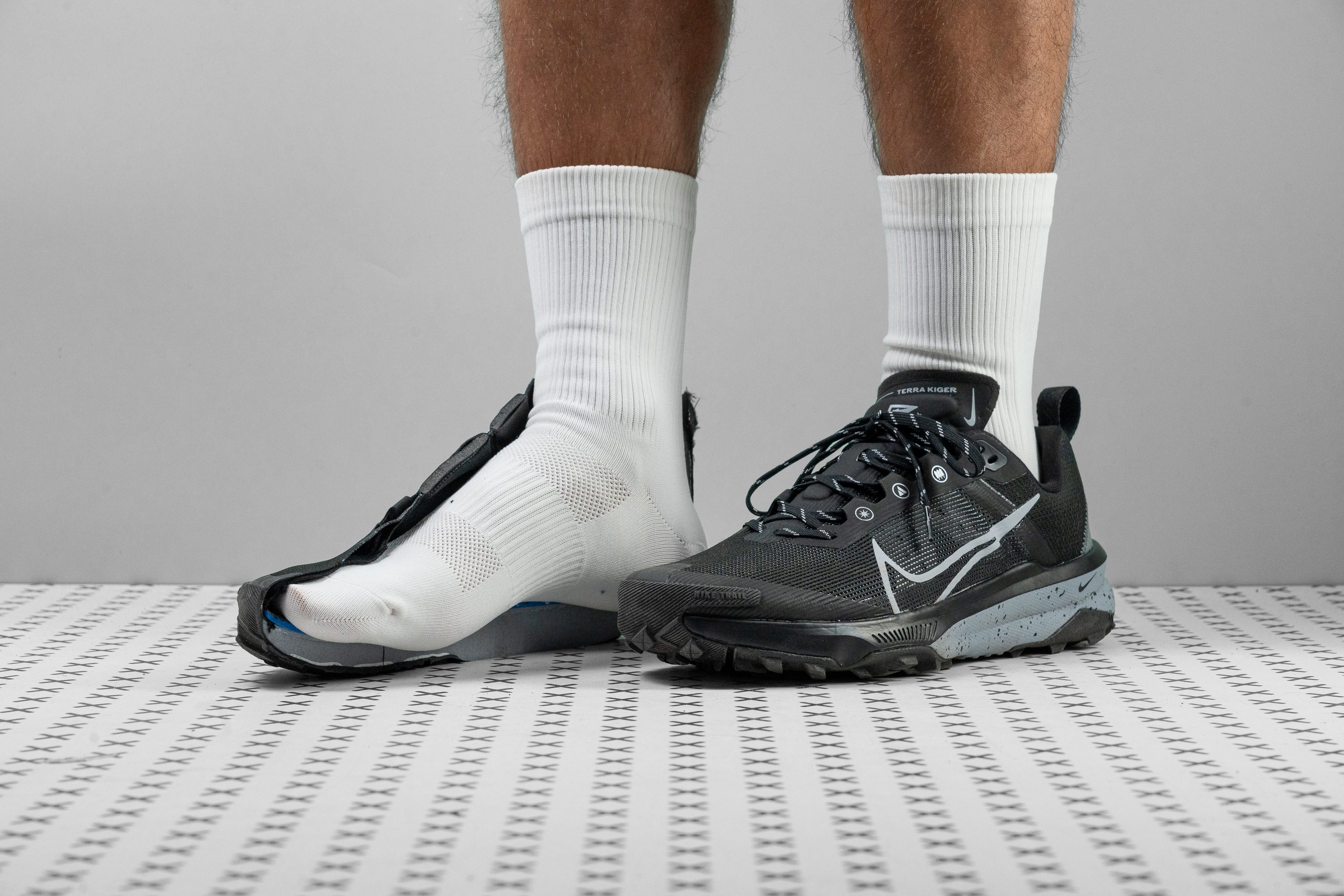Our verdict
- Top pick in best Nike trail running shoes
Pros
- Bouncy and durable React foam
- Excellent grip on dry terrain
- Built-like-a-tank upper
- Adequate cushioning for long runs
- Fantastic choice for wide feet
- No heel slippage
- Light and agile
- Remarkable value at $150
- Outstanding choice for forefoot strikers
Cons
- Subpar grip performance on wet terrain
- Could be more stable
Audience verdict
- Top 8% in trail running shoes
- Top 13% in Nike running shoes
Comparison
The most similar running shoes compared
+ + Add a shoe | |||||
|---|---|---|---|---|---|
| Audience score | 90 Great! | 78 Decent! | 87 Great! | 89 Great! | |
| Price | $150 | $155 | $180 | $140 | |
| Trail terrain | ModerateTechnical | Moderate | Moderate | ModerateTechnical | |
| Shock absorption | - | Moderate | Moderate | Low | |
| Energy return | - | Low | Moderate | Low | |
| Arch support | Neutral | Neutral | Neutral | Neutral | |
| Weight lab Weight brand | 10.2 oz / 288g 10.1 oz / 286g | 9.8 oz / 278g 9.8 oz / 277g | 10.7 oz / 302g 10.7 oz / 303g | 9.6 oz / 271g 10.2 oz / 290g | |
| Drop lab Drop brand | 4.4 mm 3.0 mm | 4.9 mm 5.0 mm | 4.0 mm 4.0 mm | 3.0 mm 4.0 mm | |
| Strike pattern | Mid/forefoot | Mid/forefoot | Mid/forefoot | Mid/forefoot | |
| Size | True to size | Slightly small | True to size | True to size | |
| Midsole softness | Soft | Balanced | Soft | Soft | |
| Difference in midsole softness in cold | Normal | Small | Small | Normal | |
| Toebox durability | Very good | Good | Good | Good | |
| Heel padding durability | Decent | Good | Good | Decent | |
| Outsole durability | - | Decent | Good | Good | |
| Breathability | Moderate | Warm | Moderate | Warm | |
| Width / fit | Medium | Medium | Medium | Medium | |
| Toebox width | Medium | Medium | Wide | Medium | |
| Stiffness | Stiff | Stiff | Moderate | Moderate | |
| Torsional rigidity | Moderate | Stiff | Stiff | Stiff | |
| Heel counter stiffness | Moderate | Moderate | Flexible | Flexible | |
| Lug depth | 4.4 mm | 4.0 mm | 4.0 mm | 4.0 mm | |
| Heel stack lab Heel stack brand | 30.1 mm 31.0 mm | 32.1 mm 40.0 mm | 30.3 mm 36.0 mm | 27.6 mm 31.0 mm | |
| Forefoot lab Forefoot brand | 25.7 mm 28.0 mm | 27.2 mm 35.0 mm | 26.3 mm 32.0 mm | 24.6 mm 27.0 mm | |
| Widths available | Normal | NormalWide | Normal | Normal | |
| For heavy runners | ✗ | ✓ | ✗ | ✗ | |
| Season | All seasons | All seasons | All seasons | Winter | |
| Removable insole | ✓ | ✓ | ✓ | ✓ | |
| Orthotic friendly | ✓ | ✓ | ✓ | ✓ | |
| Ranking | #41 Top 11% | #333 Bottom 11% | #151 Top 40% | #105 Top 28% | |
| Popularity | #303 Bottom 19% | #53 Top 15% | #98 Top 26% | #222 Bottom 41% |
Who should buy
We believe the Terra Kiger 9 is an ideal trail shoe for runners who:
- Frequently tackle dry conditions and need a roomy upper
- Seek a trail shoe that is both cushioned and lightweight
- Desire a versatile and good-looking trail running shoe that also excels at hiking
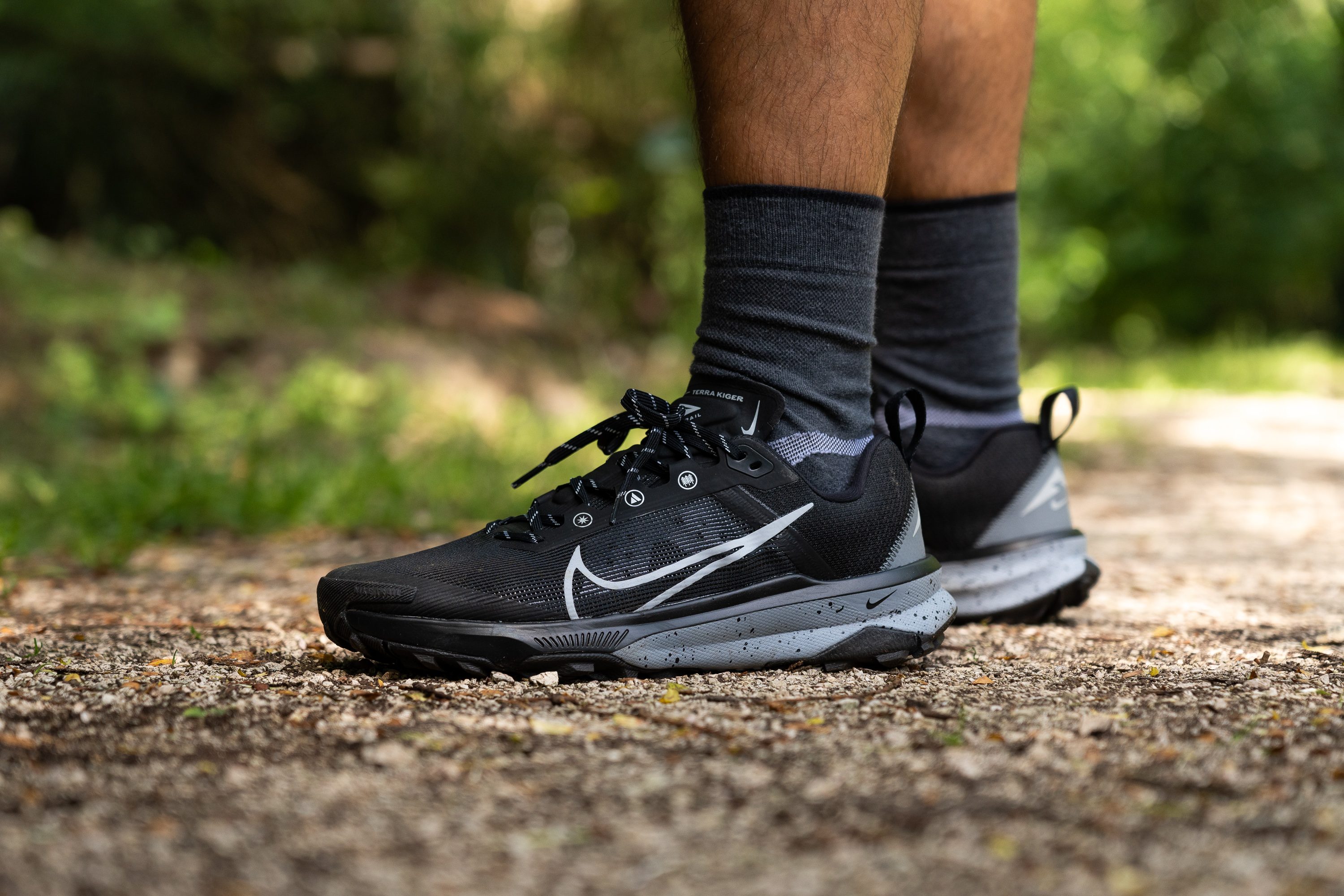
Who should NOT buy
After putting the Kiger 9 to the test across various conditions, we advise against choosing this model if your usual runs or hikes involve some water or high-humidity surfaces.
Opting for a trail running shoe with superior grip in wet conditions like the Hoka Speedgoat 5 would serve you better. And if you want something really fast for racing purposes, the carbon-plated Endorphin Edge it's faster and seems a better choice from our end.
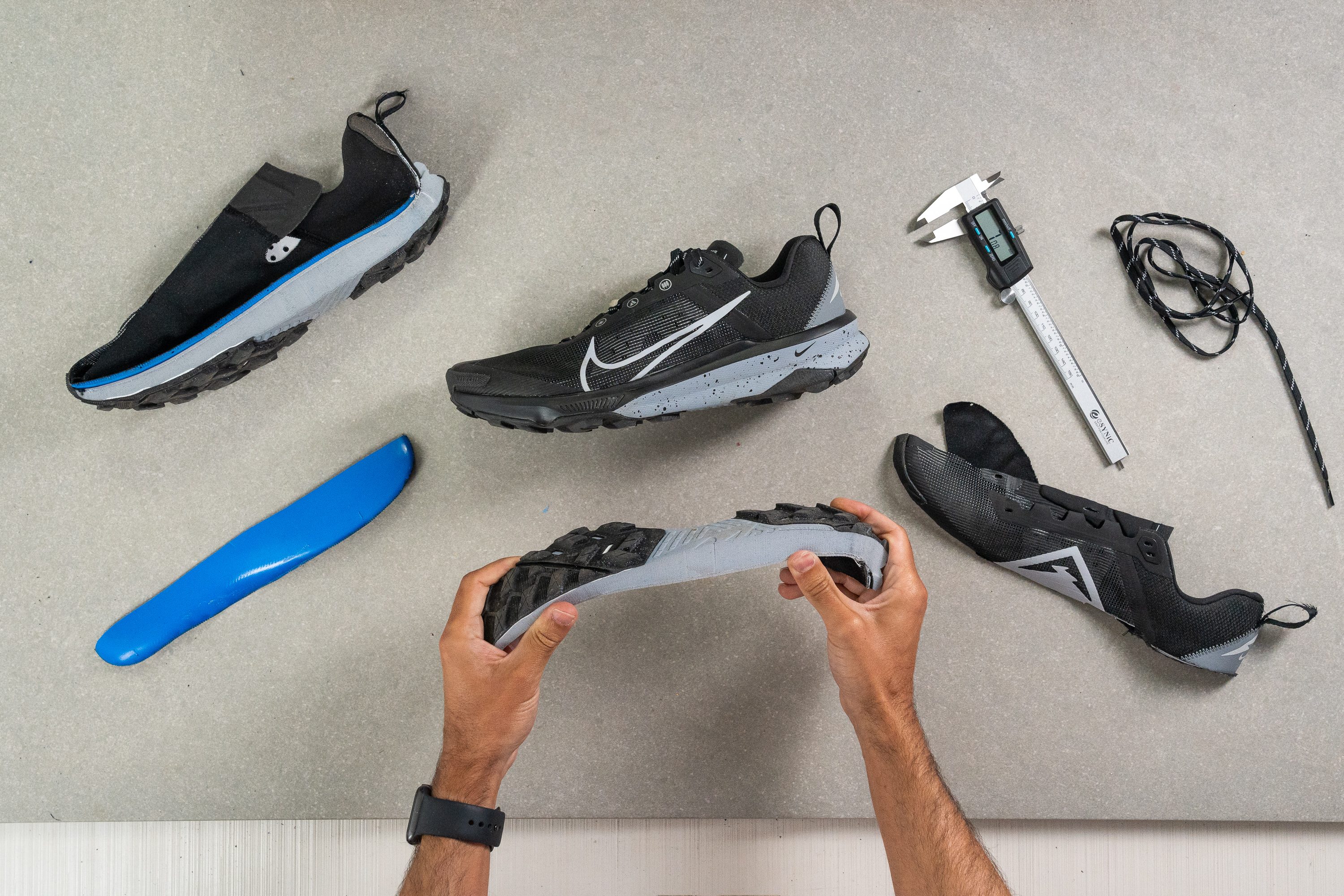
Cushioning
Heel stack
We precisely measured the Kiger 9's heel stack at 30.1 mm. While this figure sits below that of the average trail shoe, it's worth noting that it's 2.0 mm thicker than its predecessor.
Considering the Kiger's reputation as a speedy and agile shoe, we welcome this measurement. It's precisely what we were hoping for when it arrived!

| Terra Kiger 9 | 30.1 mm |
| Average | 32.5 mm |
Forefoot stack
Switching focus to the forefoot, we find 25.7 mm of React foam. This amount makes the shoe a fantastic option for those who strike midfoot or forefoot. Plus, it provides enough cushioning to protect our feet from rocks and other trail hazards—remember that there's no rock plate in this one.

| Terra Kiger 9 | 25.7 mm |
| Average | 25.1 mm |
Drop
Subtracting the forefoot measurement from the heel gives us a 4.4-mm drop.
This figure may seem low compared to the average trail shoe, but it's a smart choice for those favoring midfoot-to-forefoot striking or anyone looking for an agile shoe that can tackle technical terrain. After all, super-steep shoes are the last thing we need in such conditions.
On the contrary, heel strikers may want a higher drop, like the one found in the Pegasus Trail 4.
| Terra Kiger 9 | 4.4 mm |
| Average | 7.5 mm |
Midsole softness
We measured the Kiger's foam 17.3 HA of softness with our durometer, so this shoe provides a comforting and gentle touch on the foot, no surprise given it's a full layer of React foam.
In a head-to-head comparison with the Kiger 8, our measurements reveal an astounding transformation—34.0 HA (v8) to 17.3 HA (v9)—which translates to a ride that's 97% softer in the latest model.

| Terra Kiger 9 | 17.3 HA |
| Average | 22.0 HA |
Size and fit
Size
Nike Terra Kiger 9 fits true to size (163 votes).
Internal length
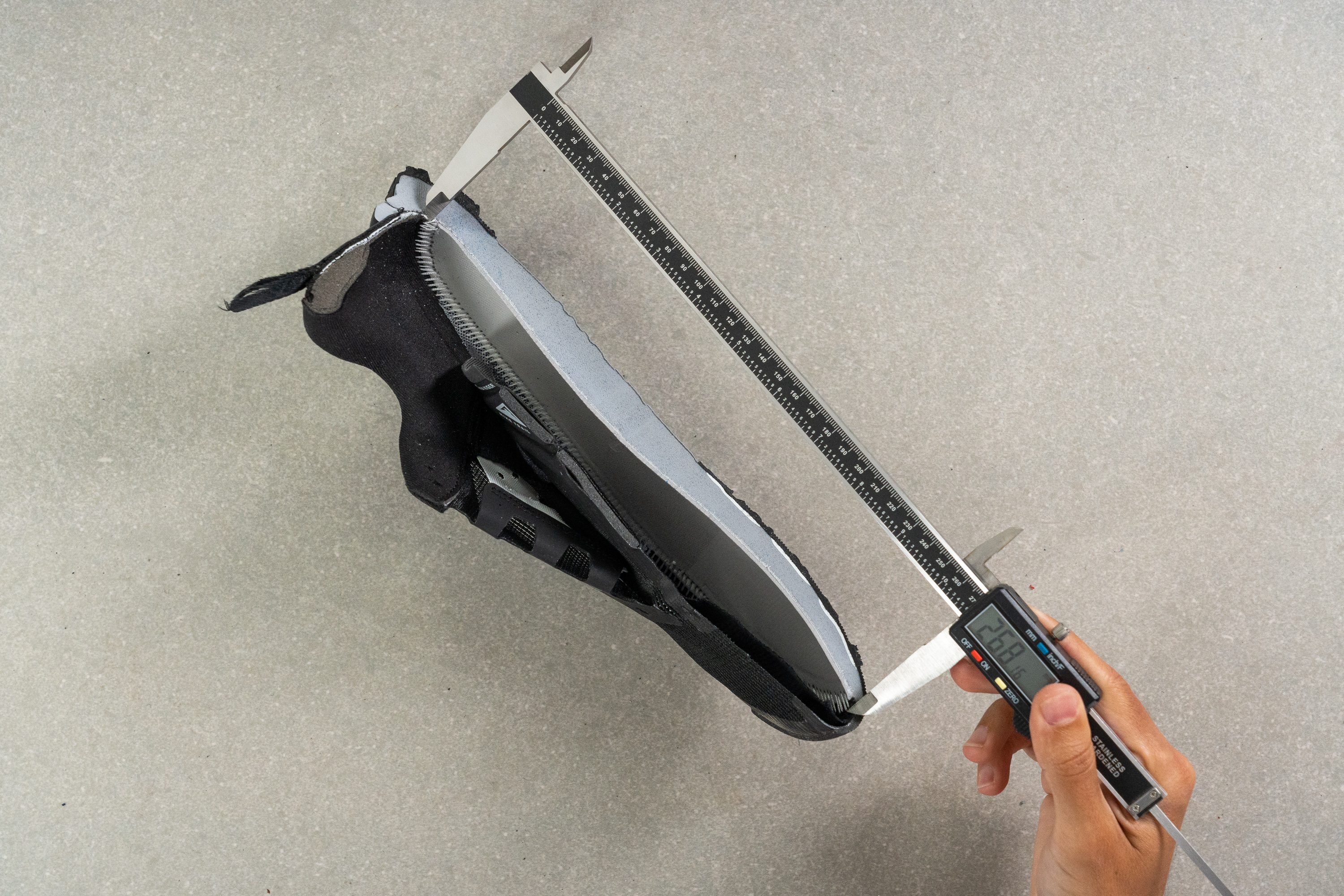
| Terra Kiger 9 | 268.2 mm |
| Average | 269.0 mm |
Width / Fit
For those of us with wider feet, we've often found Nike shoes to be exceptionally snug. However, we've seen a refreshing change recently. The Kiger 9, with its commendable width of 103.1 mm, exceeds the average trail shoe's dimensions.
This makes it one of the finest choices from Nike for those of us born with medium-to-wide feet.
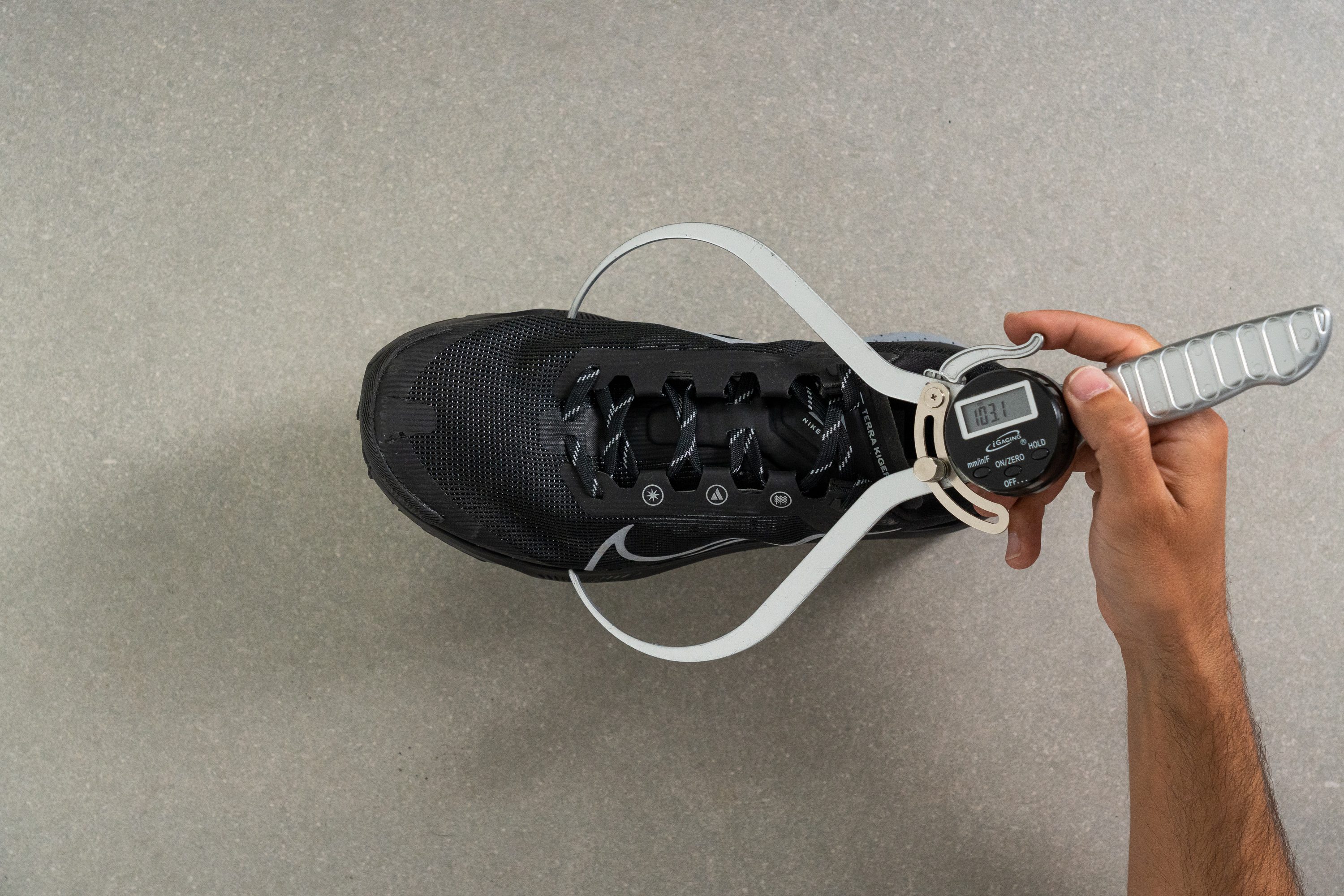
This test follows an older methodology, which is why you don't see recently tested shoes in the chart. Results from different methodologies can not be compared.
| Terra Kiger 9 | 103.1 mm |
| Average | 98.9 mm |
Toebox width
The big toe area measures a spacious 78.3 mm, which provides more than sufficient room for nearly all feet.
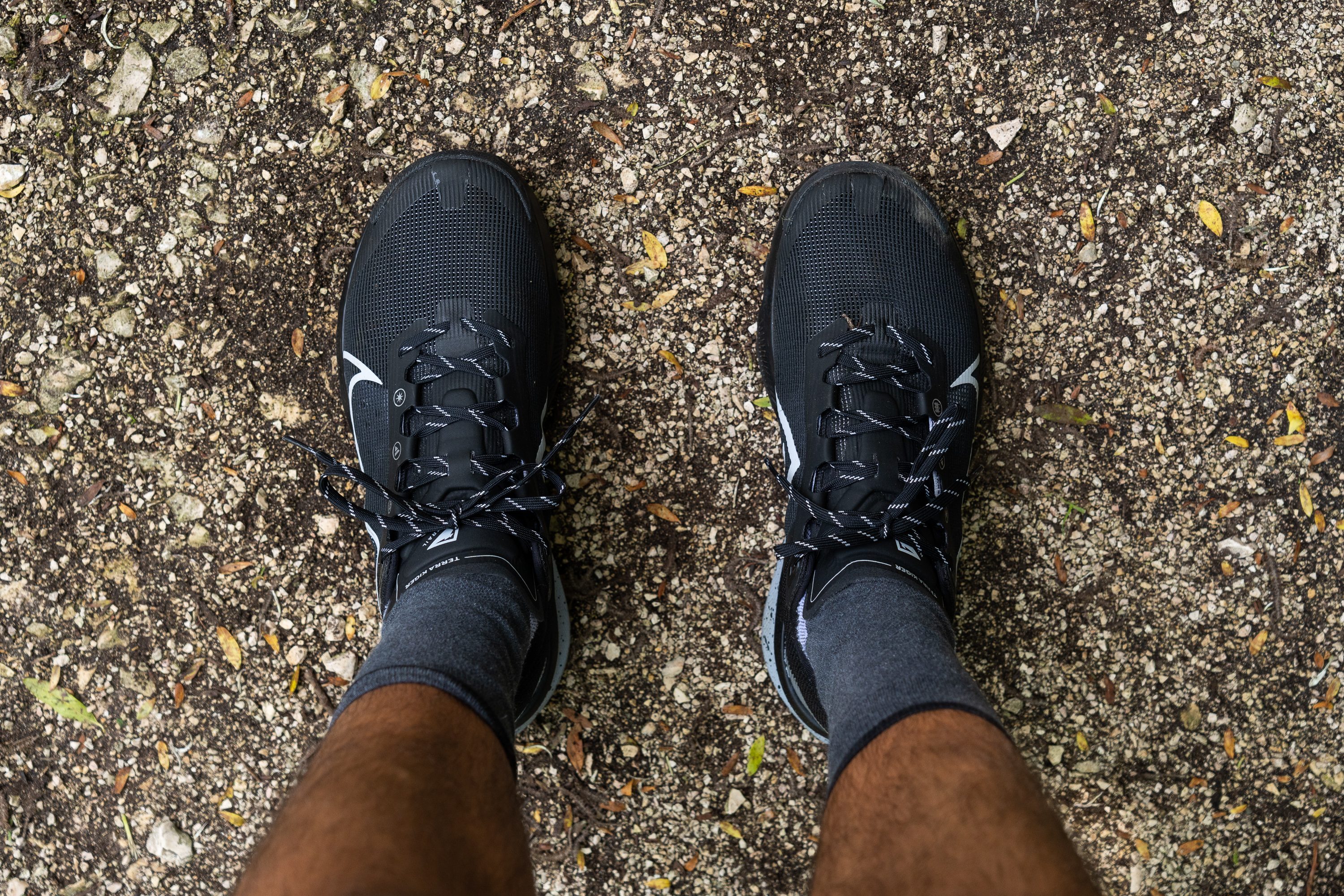
Because of that, there's also ample room for our toes to move freely even in the hottest days.
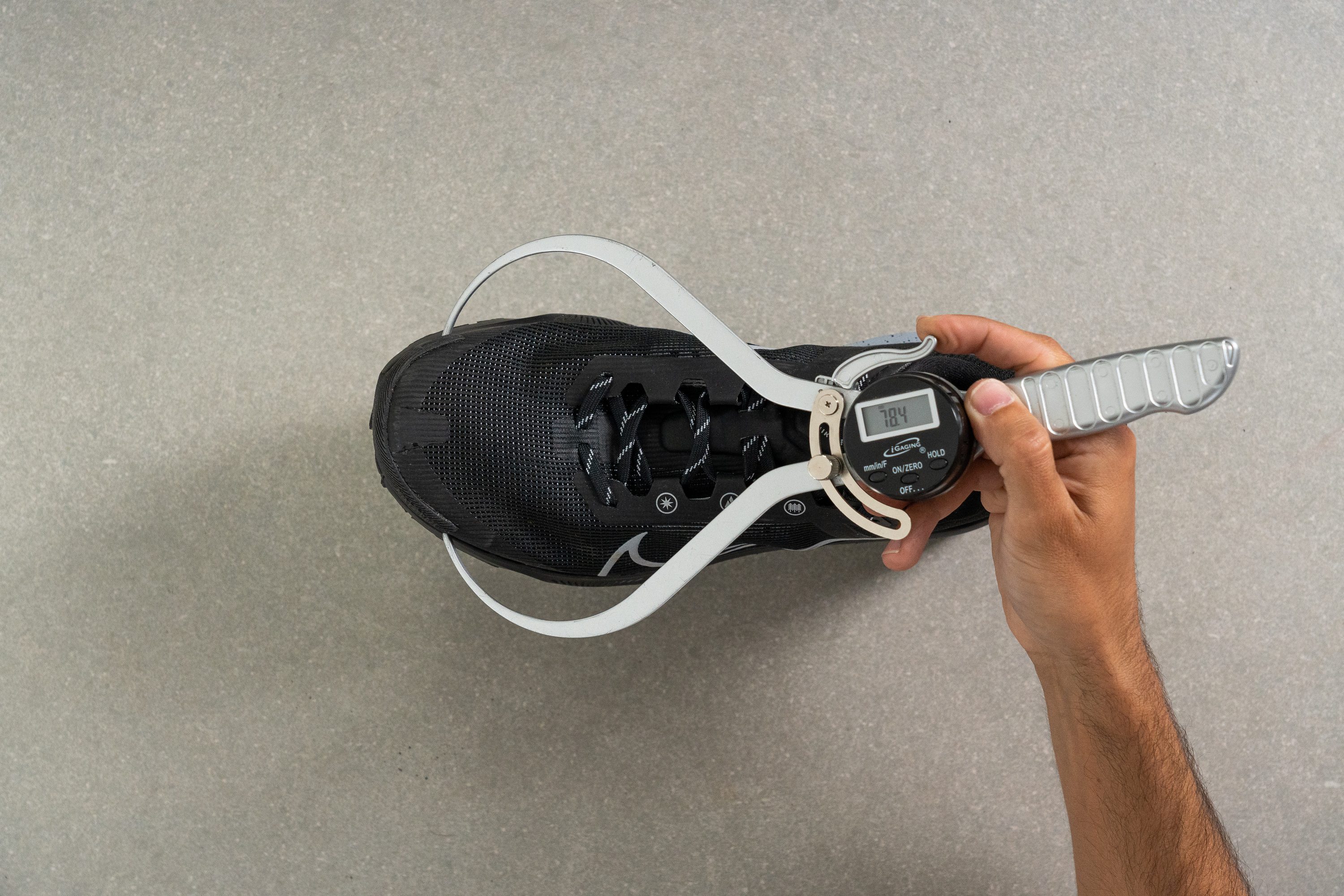
This test follows an older methodology, which is why you don't see recently tested shoes in the chart. Results from different methodologies can not be compared.
| Terra Kiger 9 | 78.3 mm |
| Average | 79.3 mm |
Traction / Grip
Lug depth
The Kiger 9, marketed as an all-rounder trail shoe ready to handle nearly any terrain, features 4.4-mm lugs. These are sufficient for most technical trails and work well on gravel or easy paths.
Yet, if our plan would be to spend a lot of time navigating mud, snow, or other particularly soft surfaces, we would favor a shoe with taller lugs. A great example would be those on the New Balance Fresh Foam X More Trail v3.

| Terra Kiger 9 | 4.4 mm |
| Average | 3.5 mm |
Flexibility / Stiffness
We're genuinely impressed with the agility of the Kiger 9 during our trail runs, a feature largely attributable to its minimal stiffness.
This flexibility is precisely what we seek in a versatile trail shoe.
This test follows an older methodology, which is why you don't see recently tested shoes in the chart. Results from different methodologies can not be compared.
| Terra Kiger 9 | 23.5N |
| Average | 27.1N |
Stiffness in cold (%)
Following a 20-minute stint in our freezer, the shoe exhibited a noticeable increase in stiffness. Even so, it remains more flexible than the majority of trail shoes.
The contrasting measurements demonstrate a 46.4% hike, resulting from the Kiger's React foam—a blend of TPE and EVA. This mix leads to less-than-optimal performance in cold weather because of the EVA. Our advanced guide offers a more in-depth look at this aspect.
| Terra Kiger 9 | 46% |
| Average | 32% |
Weight
The Kiger 9 is a lightweight champion. We tip our hats to Nike for the impressive weight-loss journey they've put this shoe through with each new release. What-a-diet!
| Shoe (US size 9) | Weight | Difference |
| Nike Terra Kiger 7 | 11.2 oz / 317g | 10% |
| Nike Terra Kiger 8 | 10.8 oz / 306g | 6% |
| Nike Terra Kiger 9 | 10.2 oz / 288g | - |
It's crystal clear that the v9 is a remarkable update in the weight department.
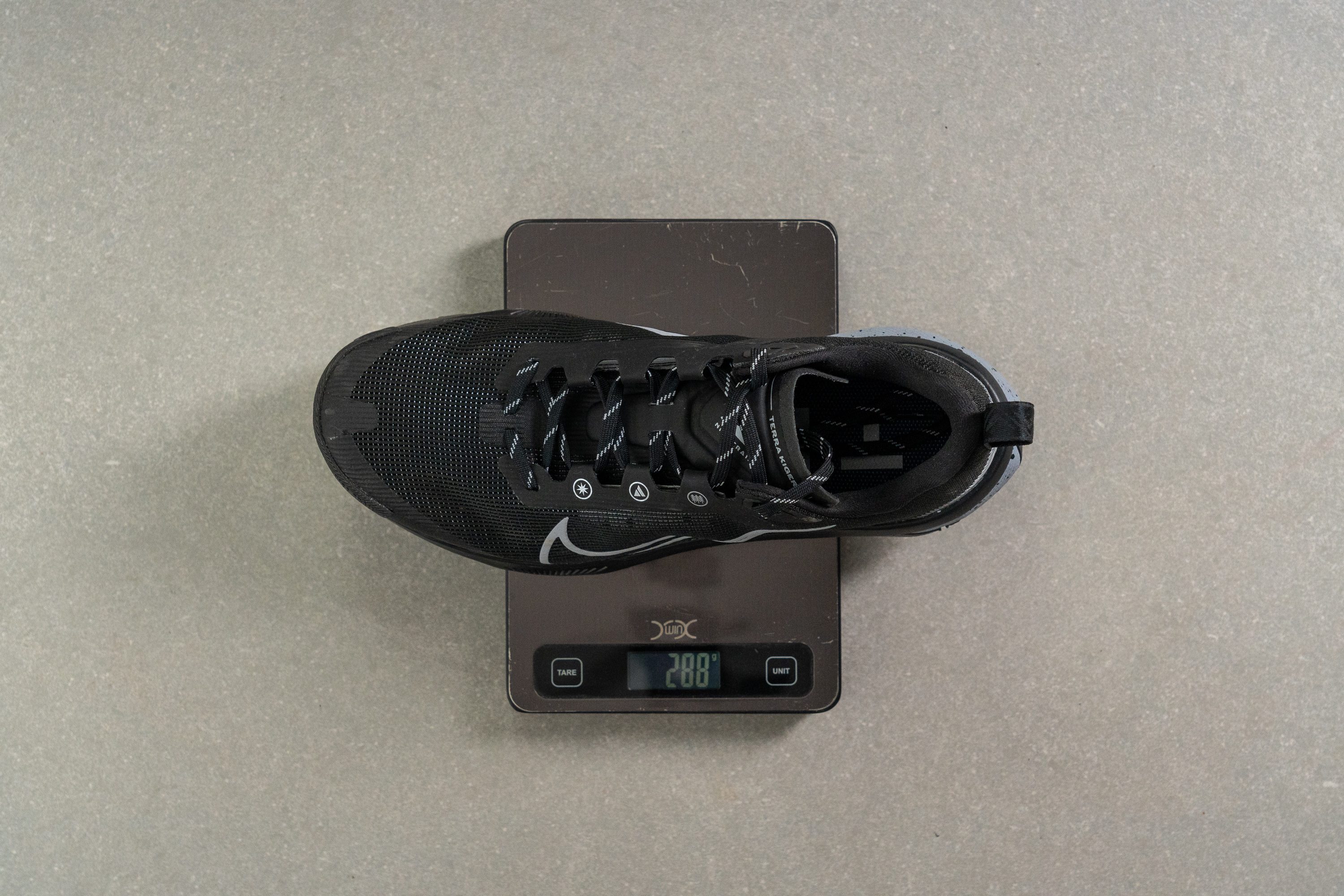
| Terra Kiger 9 | 10.2 oz (288g) |
| Average | 10.2 oz (289g) |
Breathability
Trail running shoes often come with double or even triple-layer uppers, which can limit their breathability.
Upon our initial lab inspection of the Kiger 9, we anticipated that its breathability wouldn't be top-notch. However, it proved to be adequate. We conducted our state-of-the-art smoke test and rated its breathability a run-of-the-mill 3 out of 5.
This level of ventilation works for 95% of runs, but on a particularly hot day out there in the trails, we might favor something cooler.
A thin fabric layer in the Kiger 9 increases comfort but restricts airflow, as shown in the video above.
In our light test, the Kiger 9 showed to us how thin is the engineered mesh created for this shoe by Nike.
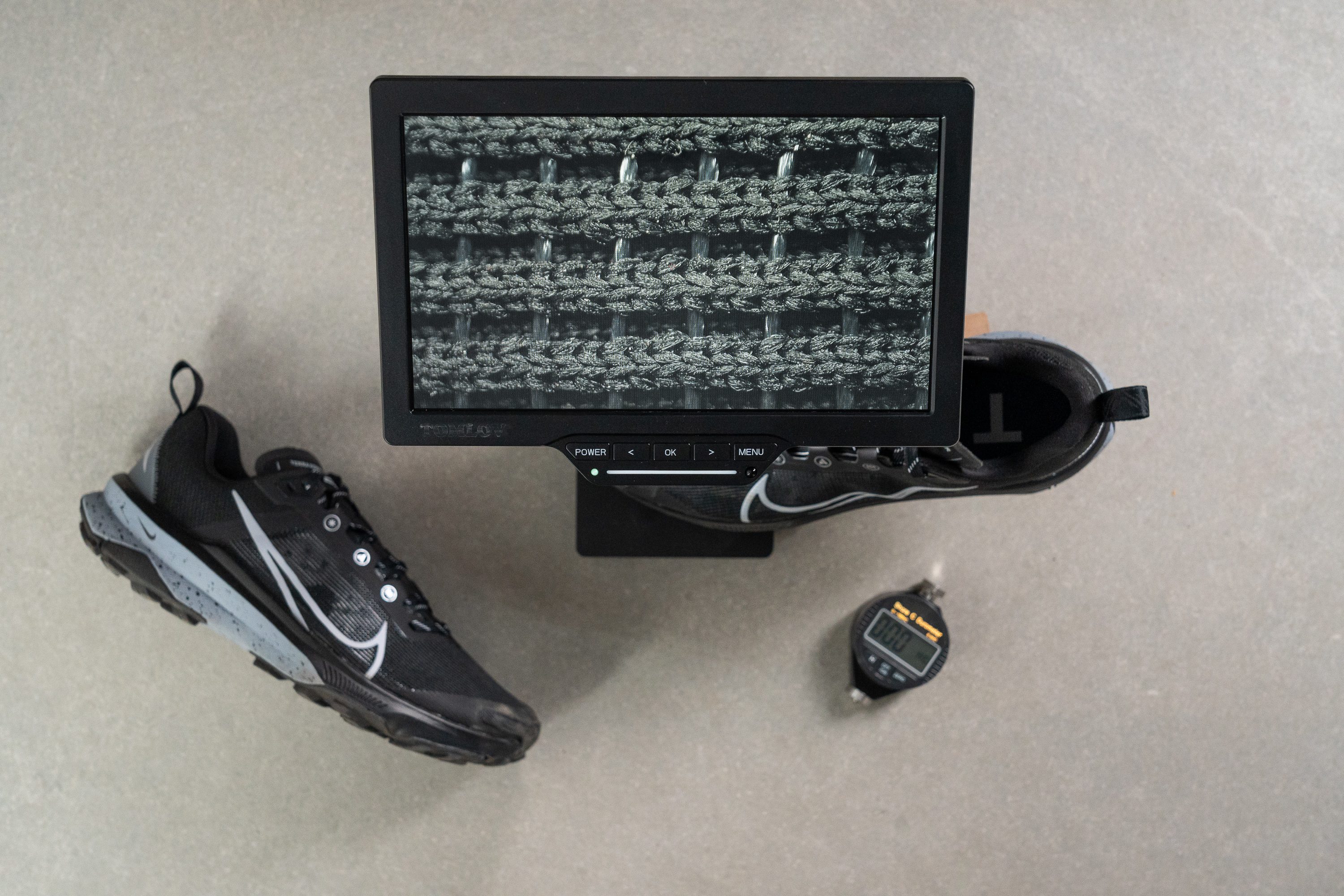
But nothing like our microscope to expose the finer details of the shoe's upper construction.
Nike chose a thin, engineered mesh without any large ventilation holes, an option that inevitably affects breathability.

| Terra Kiger 9 | 3 |
| Average | 3.2 |
Stability
Lateral stability test
Once we felt the softness of the foam underfoot, we had no illusions about the Kiger 9 being a stability champ. And that's perfectly fine if it delivers decent stability—which is the case.
Torsional rigidity
The respectable stability of the shoe, in part, is due to its moderate flexibility. We assigned a score of 3 out of 5, which aligns closely with the average.
This tells us that Nike chose not to gamble here, steering clear of making the shoe excessively rigid to boost stability, which could potentially sacrifice comfort. And a proper Kiger needs to be comfortable.
| Terra Kiger 9 | 3 |
| Average | 3.6 |
Heel counter stiffness
Nike plays it safe once again with the heel counter stiffness test, scoring a middle-of-the-road 3 out of 5. This no-risk strategy is bound to appeal to the vast majority of trail runners.
| Terra Kiger 9 | 3 |
| Average | 3 |
Midsole width - forefoot
Nike chose to address the foam softness challenge in the stability department by widening the midsole.

Crafting an impressively wide landing platform of 115.3 mm—exceeding the average trail shoe width by more than 4 mm—they've successfully ensured stability on even the plushest foam. The landings are rock-solid for those of us that are midfoot-to-forefoot strikers.
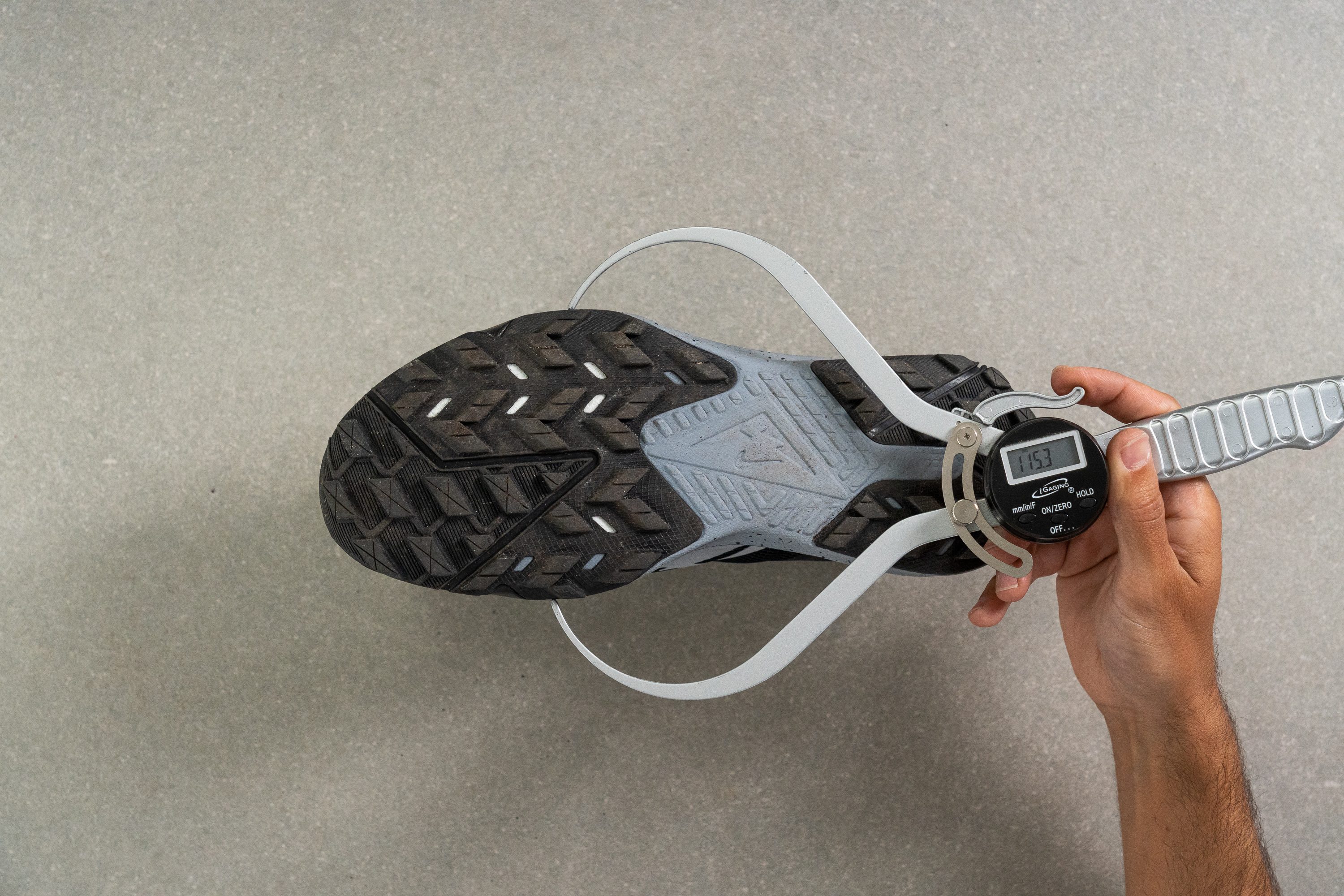
| Terra Kiger 9 | 115.3 mm |
| Average | 112.8 mm |
Midsole width - heel
While the heel of the Kiger 9 is broader than most trail shoes, it doesn't match the generous width of the forefoot. This design choice likely results from two factors:
- Nike is well-known for crafting particularly narrow heels.
- The shoe's design clearly caters to midfoot or forefoot strikers, thanks to its low drop and magnificent forefoot landing base.
For heel strikers who favor low-drop shoes, the Kiger 9 could be a good match. However, if a higher drop and a wide heel are more your thing, we'd recommend the Hoka Challenger 7.

| Terra Kiger 9 | 89.9 mm |
| Average | 89.8 mm |
Durability
Toebox durability
A-M-A-Z-I-N-G! The Kiger 9 has one of the sturdiest uppers we've ever put to the test. It's so good that, after testing it with our Dremel, we just have to give it the highest score: a solid 5 out of 5!
Comparing it to the Nike Wildhorse 8 only left us even more dazzled by the Kiger 9's performance.

| Terra Kiger 9 | 5 |
| Average | 3.1 |
Heel padding durability
At 3/5, our Dremel test result make us confident that heel padding durability isn't something to worry about with the Terra Kiger 9.
| Terra Kiger 9 | 3 |
| Average | 3 |
Outsole hardness
We measured the outsole at 84.1 HC in the lab, we find ourselves dealing with an average trail outsole, one that should last the entire lifespan of the shoe.
It offers lovely grip in dry conditions. But—like many Nike trail running shoes—it could really be better on wet surfaces.

| Terra Kiger 9 | 84.1 HC |
| Average | 85.8 HC |
Outsole thickness
We clocked the outsole thickness at 2 mm—a notch below average but still suitable for this shoe.
We agree to Nike's well-judged decision; a thicker outsole would burden the shoe with additional weight, damaging its agility, which is a key aspect for any performance-driven trail shoe.
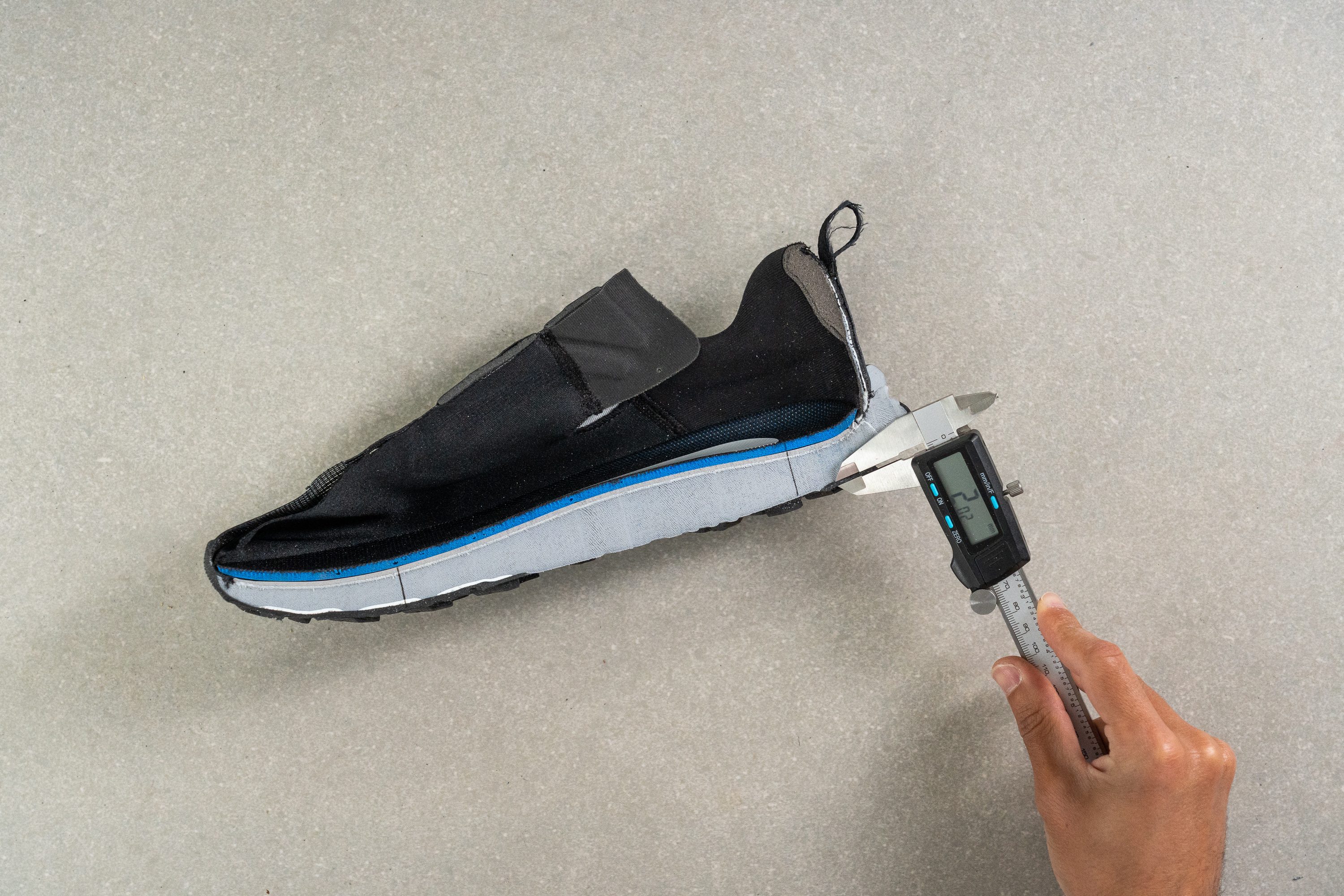
| Terra Kiger 9 | 2.0 mm |
| Average | 2.2 mm |
Misc
Insole thickness
For us that love light shoes, we often have to accept that a thinner insole is part of the deal. While it's clear that a thicker insole enhances comfort, it also adds weight, so brands strive for a perfect balance.
Nike opted for a 3.9-mm insole in the Kiger 9, and we're okay with that despite being less than the average. It might be a touch too thin for the longest ultra-races, but for anything else, it gets our RunRepeat seal of approval!
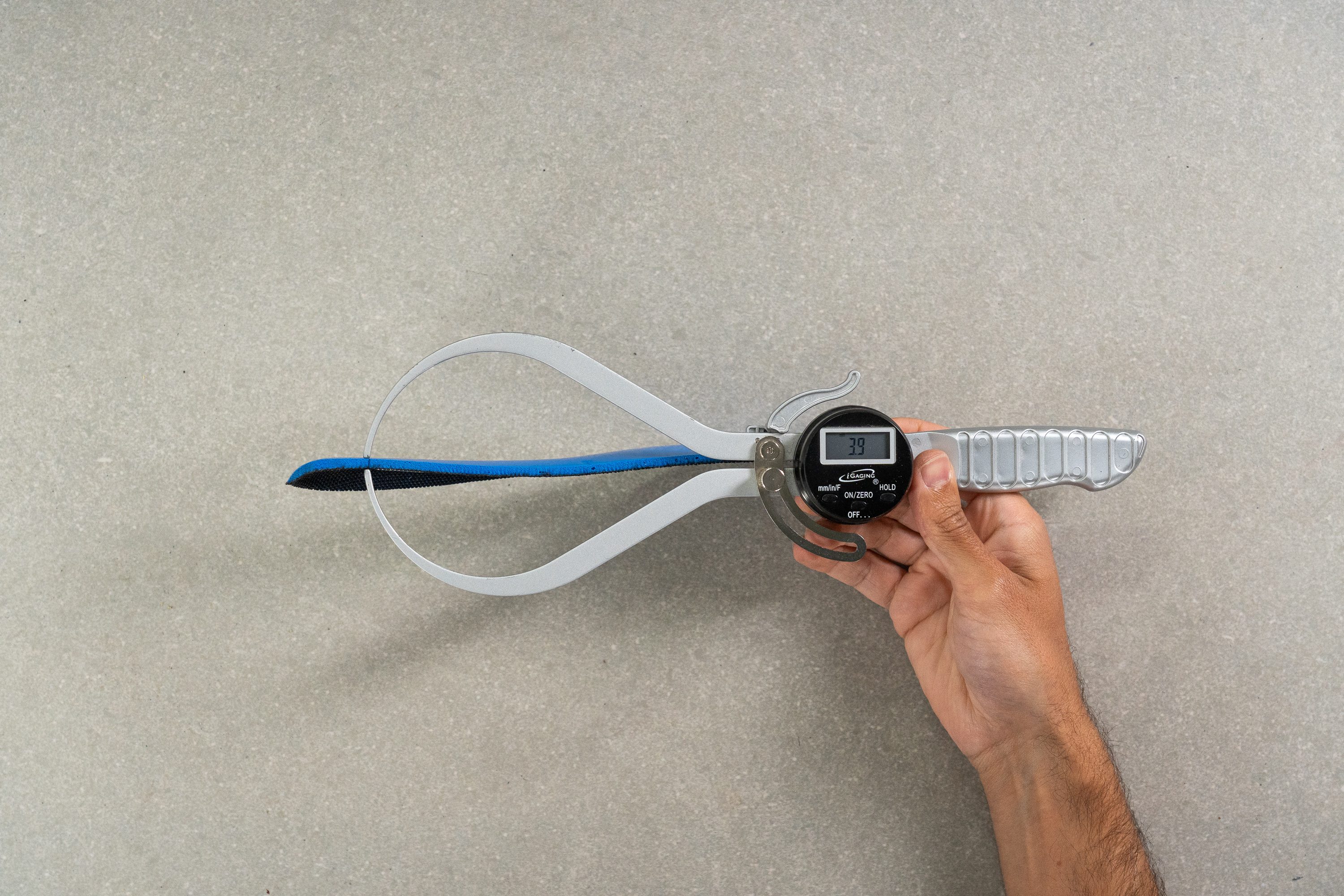
| Terra Kiger 9 | 3.9 mm |
| Average | 4.7 mm |
Removable insole
To wrap up our Kiger 9 tale, we're pleased to note that the insole is fully removable. This allowed us the flexibility to pop in insoles from other shoes or even our own custom orthotics.
Thanks to the shoe's spacious design, we don't predict any trouble fitting in practically any third-party insole.
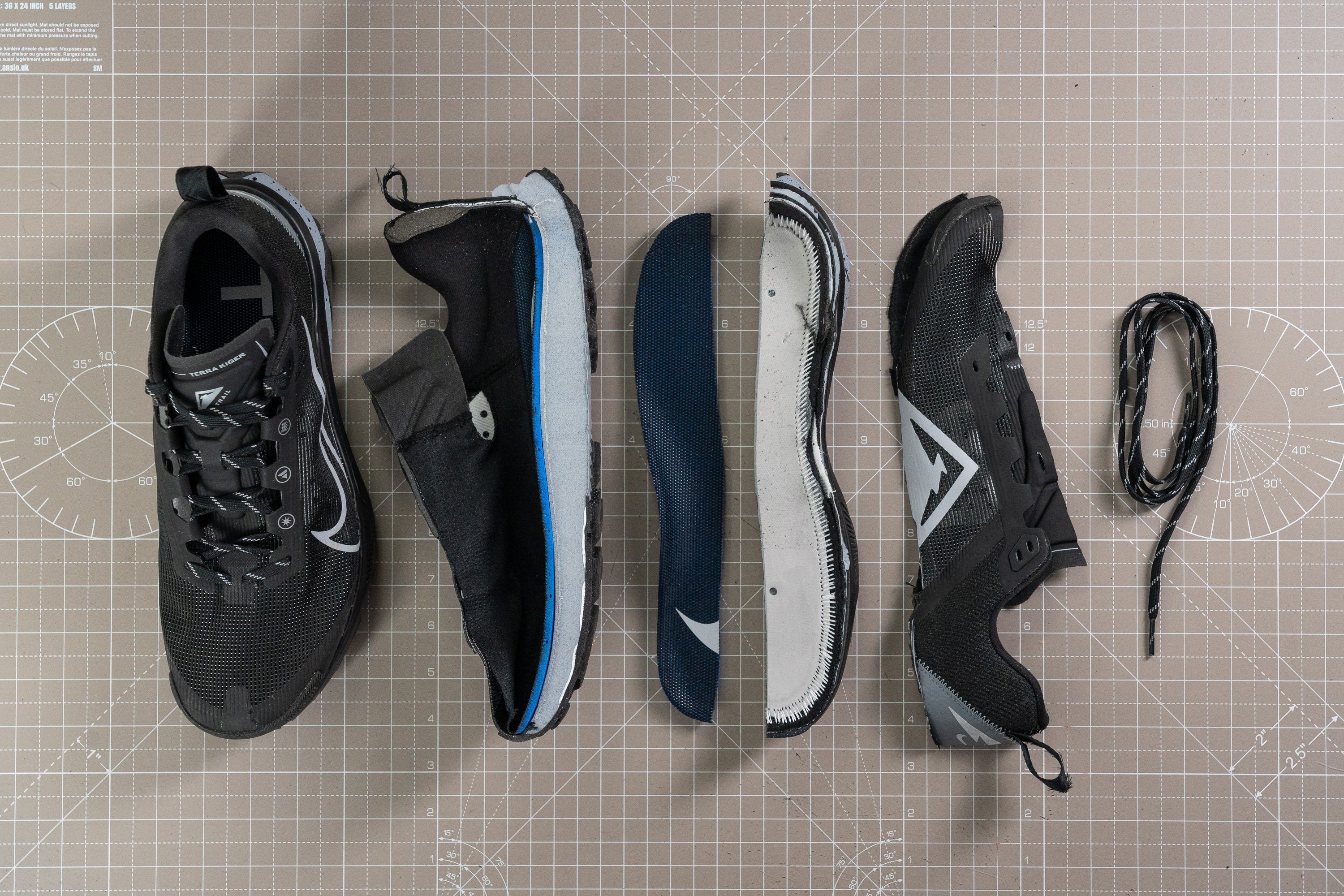
| Terra Kiger 9 | Yes |
Midsole softness in cold (%)
Even when temperatures drop, the Kiger 9 continues to offer a reliable performance. Although it's not as plush at 22.9 HA, it still outperforms the majority of other shoes.
We've got a noticeable softness change of 32.8% when we compare room temperature with post-freezer conditions (20 mins). This kind of change is definitely something you can really sense underfoot.

| Terra Kiger 9 | 33% |
| Average | 26% |
Tongue padding
Boasting a cushy 7.2 mm thick tongue, the Terra Kiger 9 is pretty much a lace-bite-free zone.
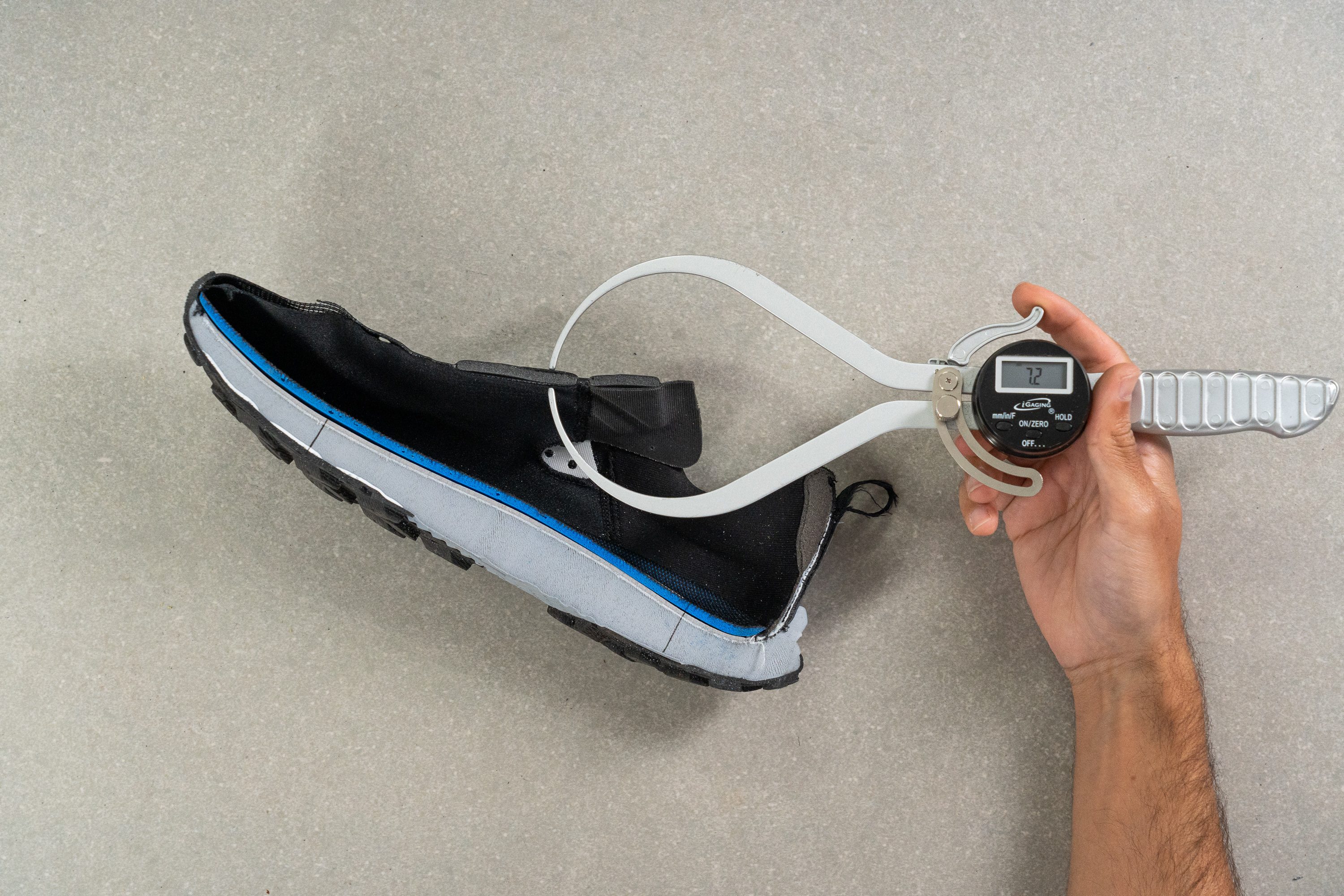
| Terra Kiger 9 | 7.2 mm |
| Average | 6.4 mm |
Tongue: gusset type
The Terra Kiger 9 features a semi-gusseted tongue—a design choice that we can appreciate, even though our preference generally leans towards fully-gusseted tongues for trail shoes. Nike has clearly chosen this route in their quest for agility and weight reduction.
A semi-gusseted tongue may slightly compromise lockdown and could potentially allow some debris into the shoe, but it's far from a deal-breaker to us. These are simply trade-offs in the design that allow for a nimble, lightweight trail shoe, and that's fine.
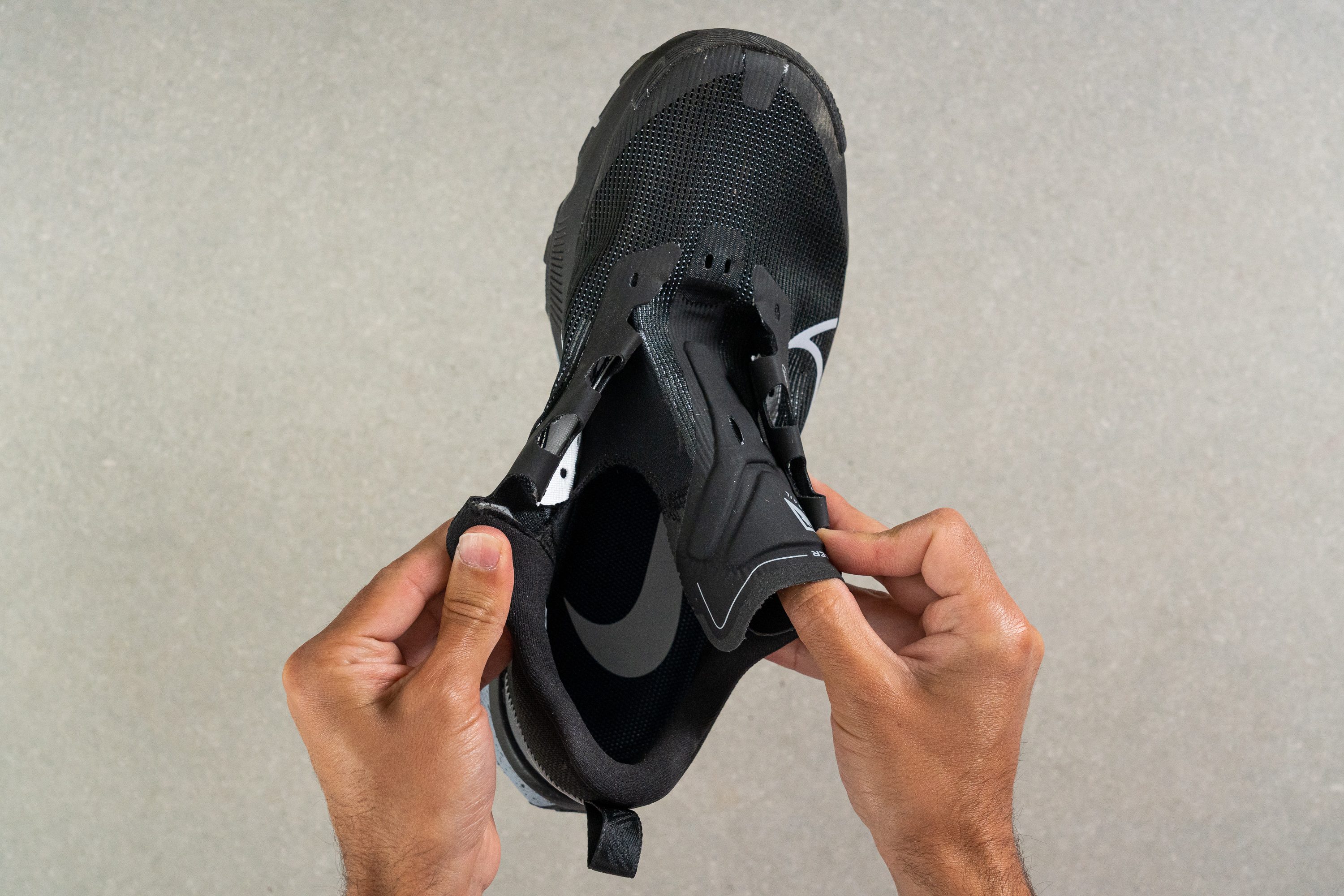
| Terra Kiger 9 | Both sides (semi) |
Heel tab
We're always thrilled to see handy finger-loop heel tabs—they're fantastic to slip the feet right into the shoe. Plus, they add some eye-catching style, right?
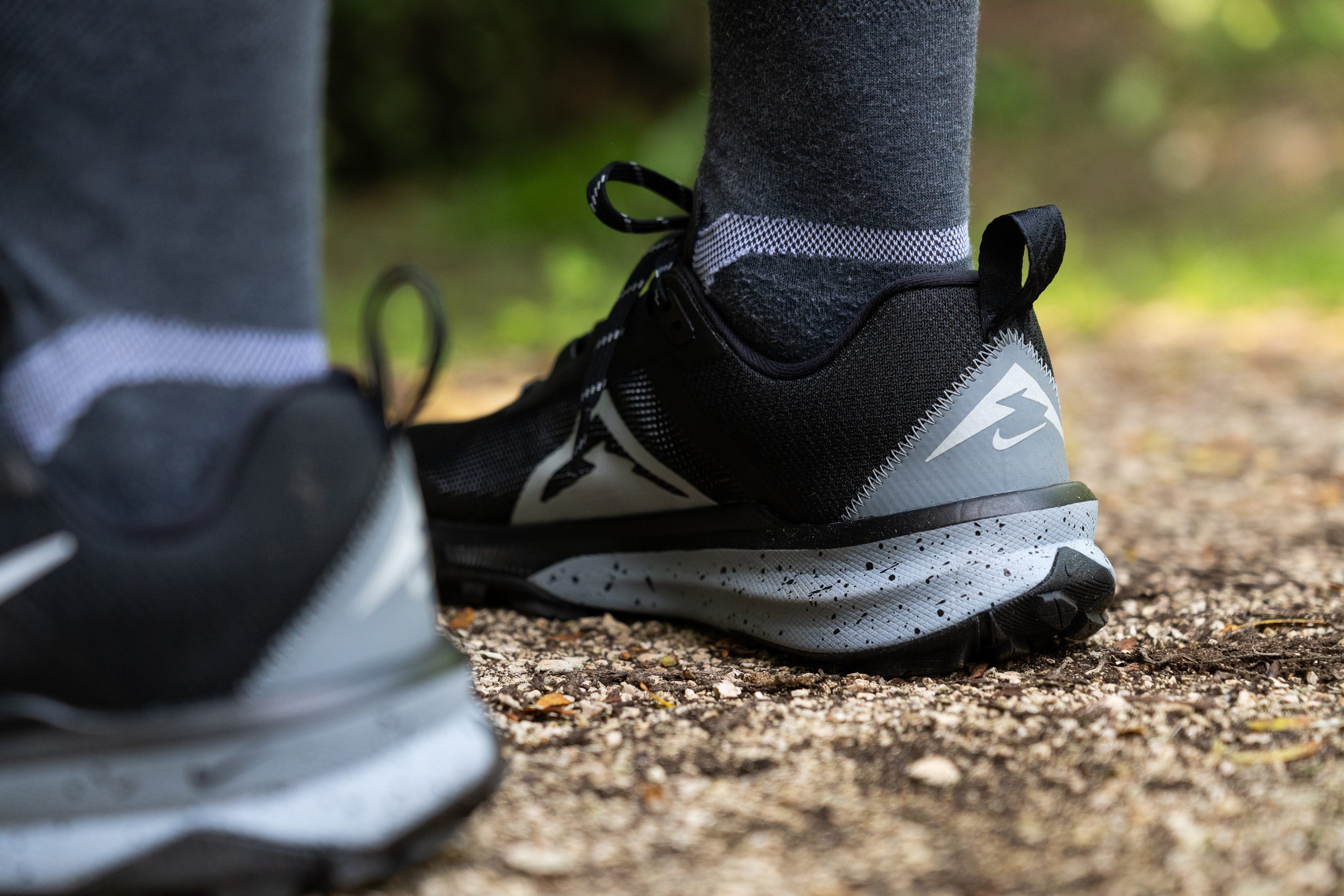
| Terra Kiger 9 | Finger loop |

